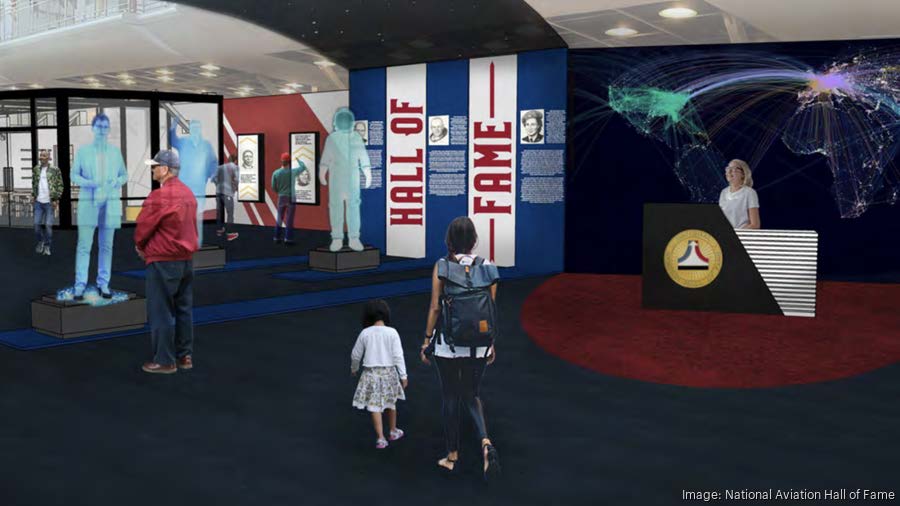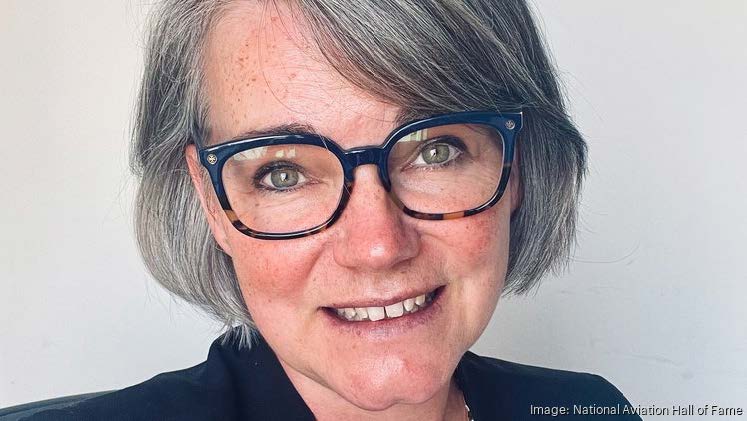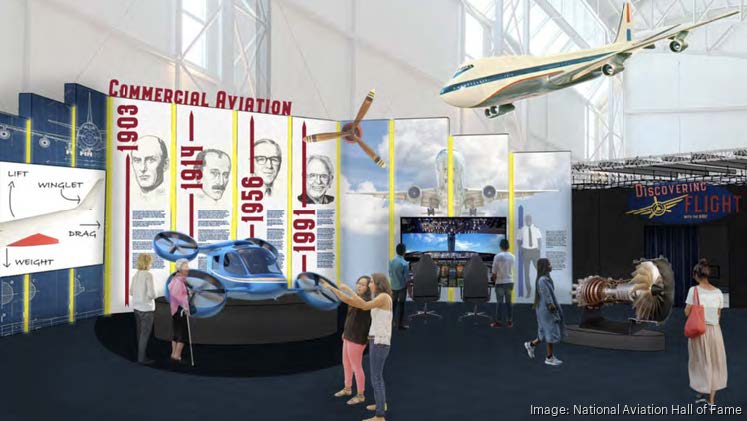Nonprofit’s ‘transformation’ of center at Air Force Museum readies final phase

The project’s goal is to create an “engaging STEM-based educational environment” that “inspires the aviation workforce oftomorrow.”
A nonprofit’s plan to transform its center at the National Museum of the U.S. Air Force — one of the Dayton region’s largest attractions — is readying its third and final phase.
Since 2020, the National Aviation Hall of Fame (NAHF), located at 1100 Spaatz St. in Dayton, has been renovating its 17,000-square-foot Heritage Hall and Education Center — resulting in the Hubble Docking Simulator, the interactive SightFlyer exhibit and a new immersive theater. An innovation lab is scheduled to open later this year.
Now, the organization has outlined plans for the third and final phase of the project, an estimated $2.2 million investment. It will “bring the remaining exhibits and galleries to life” — including flight simulators, airplane engine interactives and strategy games — sharing the “stories of America’s aviation pioneers to educate and inspire our nearly 400,000 annual visitors,” NAHF officials said.
“Through interactive digital displays and holograms, we will share the stories of our American aviation legends,” officials said.
The goal is to transform the HHEC into an “engaging STEM-based educational environment” that “inspires the aviation workforce of tomorrow.”
The final phase should wrap up and open in spring 2026, Aimee Maruyama — who was named as the NAHF’s president and CEO last year — told the Dayton Business Journal.

Aimee Maruyama is president and CEO of the National Aviation Hall of Fame (NAHF).
To fund the final leg of the effort, the group is asking the Dayton Region Priority Development & Advocacy Committee (PDAC) for over $850,000. The NAHF, has already secured $750,000 in private donations, according to its application, with another $600,000 still pending.
In the application, the NAHF outlined Dayton’s storied history in aviation — from the Wright Brothers to Ohio-born astronauts.
“A highly skilled aerospace workforce is essential to fulfilling that legacy,” the organization said. “Yet today, the aerospace industry faces a shortage of trained technical graduates.”
Maruyama called workforce development in aviation “critical,” adding that the NAHF is also focused on “diversifying” the future of the industry by making its educational programs interactive and accessible.

The final phase will “bring the remaining exhibits and galleries to life,” the National Aviation Hall of Fame said.
Workforce concerns are top of mind for many companies. In the Miami Valley, specifically, some big project wins last year — including air taxi manufacturer Joby Aviation Inc.’s (NYSE: JOBY) planned $500 million, 2,000-job investment at the Dayton International Airport — have led to questions about how to fill the incoming positions.
“From a workforce standpoint, we’re going to rely on our academia partners from our high schools to our vocational schools to our community colleges to our four years,” Jeff Hoagland, president and CEO of the Dayton Development Coalition, told the DBJ on the day Joby announced its Dayton project.
The NAHF has also partnered with PBS’ ThinkTV and the Southwest Ohio Instructional Technology Association on a classroom initiative, which has reached 6,000 classrooms across Ohio.
The PDAC process’ public comment phase ended Nov. 15. All submissions are evaluated by one of five review panels, which submit their recommendations to the full committee for final consideration.


